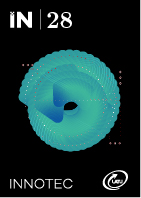Toxic cyanobacteria on the coast of San José, Río de la Plata, Uruguay
DOI:
https://doi.org/10.26461/28.06Keywords:
drinking water, water quality, estuary, blooms, microcystinAbstract
Dense blooms of potentially toxic cyanobacteria have been recorded on the north coast of the Río de la Plata estuary, which affect water quality for recreational or drinking water purposes. In this study we present results of a 7-years monitoring program in a coastal zone (Punta del Tigre, San José, Uruguay), with data of water temperature, conductivity, biomass and composition of cyanobacteria. The main objective was to determine the water temperature and salinity conditions associated with the dominance of cyanobacteria in the phytoplankton of the area studied. The concentration of total microcystins was quantified in selected samples. The blooms were also analyzed in satellite images based on the detection of chlorophyll a threshold. The most frequent species were potentially toxic: Microcystis aeruginosa, M. protocystis, M. novacekii, Dolichospermum circinale and D. uruguayense, often covering large areas in line with the satellite analysis. The concentrations of total microcystins generally exceeded the World Health Organization’s danger alerts for drinking water. Water temperatures above 19 °C, conductivities below 2 mS/cm and salinity below 0.5 were associated with a higher dominance of cyanobacteria in the total phytoplankton biomass. The high frequency of occurrence of these organisms in low conductivity conditions, common in the area, may compromise water quality for various uses, including human consumption.
Downloads
References
Aguilera, A.; Almanza, V.; Haakonsson, S.; Palacio, H.; Benitez Rodas, G.A.; Barros, M.U.G.; Capelo-Neto, J.; Urrutia, R.; Aubriot, L. y Bonilla, S., 2023. Cyanobacterial bloom monitoring and assessment in Latin America. En: Harmful Algae, 125, DOI: https://doi.org/10.1016/j.hal.2023.102429
Alcántara, I.; Somma, A.; Chalar, G.; Fabre, A.; Segura, A.; Achkar, M.; Arocena, R.; Aubriot, L.; Baladán, C.; Barrios, M.; Bonilla, S.; Burwood, M.; Calliari, D.L.; Calvo, C.; Capurro, L.; Carballo, C.; Céspedes-Payret, C.; Conde, D.; Corrales, N.; Cremella, B.; Crisci, C.; Cuevas, J.; De Giacomi, S.; De León, L.; Delbene, L.; Díaz, I.; Fleitas, V.; González-Bergonzoni, I.; González-Madina, L.; González-Piana, M.; Goyenola, G.; Gutiérrez, O.; Haakonsson, S.; Iglesias, C.; Kruk, C.; Lacerot, G.; Langone, J.; Lepillanca, F.; Lucas, C.; Martigani, F.; Martínez de la Escalera, G.; Meerhoff, M.; Nogueira, L.; Olano, H.; Pacheco, J.P.; Panario, D.; Piccini, C.; Quintans, F.; Teixeira de Mello, F.; Terradas, L.; Tesitore, G.; Vidal, L. y García-Rodríguez, F., 2022. A reply to “Relevant factors in the eutrophication of the Uruguay River and the Río Negro.” En: Science of the Total Environment, 818, 151854. DOI: https://doi.org/10.1016/j.scitotenv.2021.151854
Almuhtaram, H.; Kibuye, F. A.; Ajjampur, S.; Glover, C. M.; Hofmann, R.; Gaget, V.; Owen, C.; Wert, E. C. y Zamyadi, A., 2021. State of knowledge on early warning tools for cyanobacteria detection. En: Ecological Indicators, 133, 108442. DOI: https://doi.org/10.1016/j.ecolind.2021.108442
Arocena, R.; Chalar, G. y Pacheco, J. P., 2018. Agriculture and elevation are the main factors for Pampasic stream habitat and water quality. En: Environmental Monitoring and Assessment, 190. DOI: https://doi.org/10.1007/s10661-018-6622-6
Aubriot, L.; Zabaleta, B.; Bordet, F.; Sienra, D.; Risso, J.; Achkar, M. y Somma, A., 2020. Assessing the origin of a massive cyanobacterial bloom in the Río de la Plata (2019): Towards an early warning system. En: Water Research, 181, 115944. DOI: https://doi.org/https://doi.org/10.1016/j.watres.2020.115944
Aubriot, L. E.; Delbene, L.; Haakonsson, S.; Somma, A.; Hirsch, F. y Bonilla, S., 2017. Evolución de la eutrofización en el Río Santa Lucía: influencia de la intensificación productiva y perspectivas. En: INNOTEC, 14, pp. 7–16. DOI: https://doi.org/10.26461/14.04
Bonilla, S.; Haakonsson, S.; Somma, A.; Gravier, A.; Britos, A.; Vidal, L.; De León, L.; Brena, B.; Pírez, M.; Piccini, C.; Martínez de la Escalera, G.; Chalar, G.; González-Piana, M.; Martigani, M. y Aubriot, L., 2015. Cianobacterias y cianotoxinas en ecosistemas límnicos de Uruguay. En: INNOTEC, 10, pp. 9–22. DOI: https://doi.org/10.26461/10.01
Bonilla, S. y Pick, F. R., 2017. Freshwater bloom-forming cyanobacteria and anthropogenic change. En: Limnology and Oceanography e-lectures, 7, pp. 1–62. DOI: https://doi.org/10.1002/loe2.10006
Bonilla, S.; Aubriot, L.; Haakonsson, S.; Illarze, M.; Díaz, I. y Brena, B. M., 2021. Las floraciones de cianobacterias tóxicas comprometen el uso del agua del Río Negro, Uruguay. En: INNOTEC, 22, e577. DOI: https://doi.org/https://doi.org/10.26461/22.08
Bonilla, S. y O’Farrell, I. 2023. La importancia del uso del biovolumen en estudios de fitoplancton y monitoreo ambiental de cianobacterias. En: Ecología Austral, 33, pp. 558-566. DOI: https://doi.org/10.25260/EA.23.33.2.0.2148
Bordet, F.; Fontanarrosa, M. S., y O’Farrell, I., 2017. Influence of light and mixing regime on bloom-forming phytoplankton in a subtropical reservoir. En: River Research and Applications, 33, pp. 1315–1326. DOI: https://doi.org/10.1002/rra.3189
Brena, B. M. y Bonilla, S., 2009. Producción de toxinas y otros metabolitos. En: Bonilla, S., ed. Cianobacterias planctónicas del Uruguay. Manual para la identificación y medidas de monitoreo. Montevideo: UNESCO, PHI-VII. (Documento técnico, 16). pp. 16-18. ISBN: 978-92-9089-138-3.
Brugnoli, E.; Arocena, R.; Cabrera-Lamanna, L. y Muniz, P., 2021. Management and monitoring of eutrophication: Trophic state indexes on the Río de la Plata northern coast. En: Leal Filho, W.; Azul, A. M.; Brandli, L.; Lange Salvia, A. y Wall, T., eds. Life below water. Encyclopedia of the UN Sustainable Development Goals. Cham: Springer. DOI: https://doi.org/10.1007/978-3-319-71064-8_114-1
Burford, M. A.; Carey, C. C.; Hamilton, D. P.; Huisman, J.; Paerl, H. W.; Wood, S. A. y Wulff, A., 2020. Perspective: Advancing the research agenda for improving understanding of cyanobacteria in a future of global change. En: Harmful Algae, 91, 101601. DOI: https://doi.org/10.1016/j.hal.2019.04.004
Castro, M. y Arocena, R., 2020. Exotic bivalves respond differently to sediment supply. En: Panamerican Journal of Aquatic Sciences, 15, pp. 163–172.
Chalar, G.; De León L.; Brugnoli E.; Clemente J. y Paradiso M., 2002. Antecedentes y nuevos aportes al conocimiento de la estructura y dinámica del Embalse Salto Grande. En: Fernandez-Cirelli, A. y Chalar G., eds. El agua en Iberoamérica: de la Limnología a la Gestión en Sudamérica. CYTED, aprovechamiento y gestión de los recursos hídricos. Bs. As.: Editorial Eudeba. pp. 123–142.
Chalar, G., 2009. Embalse Salto Grande: la diversidad del fitoplancton como herramienta para la gestión de las floraciones de Microcystis. En: Bonilla, S., ed. Cianobacterias planctónicas del Uruguay. Manual para la identificación y medidas de monitoreo. Montevideo: UNESCO. PHI-VII. (Documento técnico, 16). pp. 76–78. ISBN: 978-92-9089-138-3.
Chorus, I. y Welker, M., 2021. Toxic cyanobacteria in water. A guide to their public health consequences, monitoring and management. 2a ed. Boca Raton: CRC Press. DOI: https://doi.org/10.1201/9781003081449.
Conde, D.; Arocena, R. y Rodríguez, L., 2002. Recursos acuáticos superficiales de uruguay: ambientes, algunas problemáticas y desafíos para la gestión las aguas superficiales continentales. En: Ambios, pp. 5–9.
Cleveland, W. S. y Devlin, S. J., 1988. Locally weighted regression: an approach to regression analysis by local fitting. En: Journal of the American Statistical Association, 83, pp. 596–610. DOI: https://doi.org/10.1080/01621459.1988.10478639
De León, L. y Yunes, J. S., 2001. First report of a microcystin-containing bloom of the cyanobacterium Microcystis aeruginosa in the La Plata river, South America. En: Environmental Toxicology, 16, pp. 1989–1990.
Dias Tadeu, N.; Trimble, M.; Lázaro, M.; Venturini, P. y Venegas, M., 2023. Divergent perspectives about water security: hydrosocial transformations in the metropolitan region of Montevideo (Uruguay). En: Frontiers in Sustainable Cities, 5. DOI: https://doi.org/10.3389/frsc.2023.1207652.
Ferrari, G.; Pérez, M. C.; Dabezies, M.; Míguez, D. y Saizar, C., 2011. Planktic Cyanobacteria in the Lower Uruguay River, South America. En: Fottea, 11, pp. 225–234. DOI: http://dx.doi.org/10.5507/fot.2011.021.
Ferrari, G., 2020. Water flow and temperature as main factors that regulate phytoplankton and cyanobacterial blooms in a large subtropical river. En: INNOTEC, 20, pp. 30–66. DOI: https://doi.org/10.12461/20.07.
Fischer, W. J. y Dietrich, D. R., 2000. Pathological and biochemical characterization of microcystin-induced hepatopancreas and kidney damage in carp (Cyprinus carpio). En: Toxicology and Applied Pharmacology, 164, pp. 73–81. DOI: https://doi.org/10.1006/taap.1999.8861.
Giannuzzi, L.; Sedan, D.; Echenique, R. y Andrinolo, D., 2011. An acute case of intoxication with cyanobacteria and cyanotoxins in recreational water in Salto Grande dam, Argentina. En: Marine Drugs, 9, pp. 2164–2175. DOI: https://doi.org/10.3390/md9112164.
Gitelson, A. A.; Dall’Olmo, G.; Moses, W.; Rundquist, D. C.; Barrow, T.; Fisher, T. R.; Gurlin, D. y Holz, J., 2008. A simple semi-analytical model for remote estimation of chlorophyll-a in turbid waters: Validation. En: Remote Sensing of Environment, 112, 3582–3593. DOI: https://doi.org/10.1016/j.rse.2008.04.015
González-Piana, M.; Fabián, D.; Piccardo, A. y Chalar, G., 2017. Dynamics of total microcystin LR concentration in three subtropical hydroelectric generation reservoirs in Uruguay, South America. En: Bulletin of Environmental Contamination and Toxicology, 99, pp. 488–492. DOI: https://doi.org/10.1007/s00128-017-2158-7
Goyenola, G.; Kruk, C.; Mazzeo, N.; Nario, A.; Perdomo, C.; Piccini, C. y Meerhoff, M., 2021. Producción, nutrientes, eutrofización y cianobacterias en Uruguay armando el rompecabezas. En: INNOTEC, 22, pp. 1–33. DOI: https://doi.org/10.26461/22.02
Haakonsson, S.; Rodríguez-Gallego, L.; Somma, A. y Bonilla, S., 2017. Temperature and precipitation shape the distribution of harmful cyanobacteria in subtropical lotic and lentic ecosystems. En: Science of the Total Environment, 609, pp. 1132–1139. DOI: https://doi.org/10.1016/j.scitotenv.2017.07.067
Haakonsson, S.; Rodríguez, M. A.; Carballo, C.; Pérez, M. del C.; Arocena, R. y Bonilla, S., 2020. Predicting cyanobacterial biovolume from water temperature and conductivity using a Bayesian compound Poisson-Gamma model. En: Water Research, 176. DOI: https://doi.org/10.1016/j.watres.2020.115710
Haakonsson, S.; Maciel, F.; Rodríguez, M. A.; Ponce de León, L.; Rodríguez-Gallego, L.; Arocena, R.; Pedocchi, F. y Bonilla, S., 2024. Monitoring cyanobacterial blooms: a strategy combining predictive modeling and remote sensing approaches. En: Environmental Earth Sciences, 83. DOI: https://doi.org/10.1007/s12665-024-11488-3
International Organization for Standarization, 1992. ISO 10260: Water quality --Measurement of biochemical parameters -- pectrometric determination of the chlorophyll-a concentration. Ginebra: ISO.
Konapala, G.; Mishra, A. K.; Wada, Y. y Mann, M. E., 2020. Climate change will affect global water availability through compounding changes in seasonal precipitation and evaporation. En: Nature Communications, 11, pp. 1–10. DOI: https://doi.org/10.1038/s41467-020-16757-w
Kozlíková-Zapomêlová, E.; Ferrari, G. y Pérez, M.C., 2016. Dolichospermum uruguayense sp. nov.; a planktic nostocacean cyanobacterium from the Lower Uruguay River, South America. En: Fottea, 16, pp. 189–200. DOI: https://doi.org/10.5507/fot.2016.009
Kruk, C.; Martínez, A.; Martínez de la Escalera, G.; Trinchin, R.; Manta, G.; Segura, A. M.; Piccini, C.; Brena, B.; Fabiano, G.; Pirez, M.; Gabito, L.; Alcántara, I. y Yannicelli, B., 2019. Floración excepcional de cianobacterias tóxicas en la costa de Uruguay, verano 2019. En: INNOTEC, 18, pp. 36–68. DOI: https://doi.org/10.26461/18.06
Li, X.; Dreher, T. W. y Li, R., 2016. An overview of diversity, occurrence, genetics and toxin production of bloom-forming Dolichospermum (Anabaena) species. En: Harmful Algae, 54, pp. 54–68. DOI: https://doi.org/10.1016/j.hal.2015.10.015
Maciel, F. P.; Haakonsson, S.; Ponce de León, L.; Bonilla, S. y Pedocchi, F., 2023a. Challenges for chlorophyll-a remote sensing in a highly variable turbidity estuary, an implementation with sentinel-2. En: Geocarto International, 38(1). DOI: https://doi.org/10.1080/10106049.2022.2160017
Maciel, F. P.; Haakonsson, S.; Ponce de León, L.; Bonilla, S. y Pedocchi, F., 2023b. Satellite monitoring of chlorophyll-a threshold levels during an exceptional cyanobacterial bloom (2018-2019) in the Río de la Plata. En: Ribagua, 10, pp. 62–78. DOI: https://doi.org/10.1080/23863781.2023.2264511
Moss, B.; Kosten, S.; Meerhoff, M.; Battarbee, R.W.; Jeppesen, E.; Mazzeo, N.; Havens, K.; Lacerot, G.; Zhengwen, L.; De Meester, L.; Paerl, H. y Scheffer, M., 2011. Allied attack: climate change and eutrophication. En: Inland Waters, 1, pp. 101–105. DOI: https://doi.org/10.5268/iw-1.2.359
Muñoz, N.; Bonilla, S.; Arocena, R.; Maciel, F.; Haakonsson, S.; Pedocchi, F. y Machado, I., 2024. Estuarine front dynamics drive ichthyoplankton assemblage in the tidal freshwater zone of the Río de la Plata, South America. En: Regional Studies in Marine Science, 73. DOI: https://doi.org/10.1016/j.rsma.2024.103521
O’Farrell, I.; Bordet, F. y Chaparro, G., 2012. Bloom forming cyanobacterial complexes co-occurring in a subtropical large reservoir: Validation of dominant eco-strategies. En: Hydrobiologia 698, pp. 175–190. DOI: https://doi.org/10.1007/s10750-012-1102-4
O’Farrell, I.; Motta, C.; Forastier, M.; Polla, W.; Otaño, S.; Meichtry, N.; Devercelli, M. y Lombardo, R., 2019. Ecological meta-analysis of bloom-forming planktonic Cyanobacteria in Argentina. En: Harmful Algae, 83, pp. 1–13. DOI: https://doi.org/10.1016/j.hal.2019.01.004
Pírez, M.; Gonzalez-Sapienza, G.; Sienra, D.; Ferrari, G.; Last, M.; Last, J.A. y Brena, B.M., 2013. Limited analytical capacity for cyanotoxins in developing countries may hide serious environmental health problems: Simple and affordable methods may be the answer. En: Journal of Environmental Management, 114, pp. 63–71. DOI: https://doi.org/https://doi.org/10.1016/j.jenvman.2012.10.052
R Core Team, 2021. R: A language and environment for statistical computing. Vienna: R Foundation for Statistical Computing. [Consulta: 1 de marzo de 2023]. Disponible en: https://www.R-project.org/
Rodell, M.; Famiglietti, J. S.; Wiese, D. N.; Reager, J. T.; Beaudoing, H. K.; Landerer, F. W. y Lo, M. H., 2018. Emerging trends in global freshwater availability. En: Nature, 557, pp. 651–659. DOI: https://doi.org/10.1038/s41586-018-0123-1
Sathicq, M. B.; Gómez, N.; Andrinolo, D.; Sedán, D. y Donadelli, J. L., 2014. Temporal distribution of cyanobacteria in the coast of a shallow temperate estuary (Río de la Plata): some implications for its monitoring. En: Environmental Monitoring and Assessment, 186, pp. 7115–7125. DOI: https://doi.org/10.1007/s10661-014-3914-3
Svirčev, Z.; Lalić, D.; Bojadžija Savić, G.; Tokodi, N.; Drobac Backović, D.; Chen, L.; Meriluoto, J. y Codd, G. A., 2019. Global geographical and historical overview of cyanotoxin distribution and cyanobacterial poisonings. En: Archives of Toxicology, 93, pp. 2429-2481. DOI: https://doi.org/10.1007/s00204-019-02524-4
Sournia, A., 1978. Phytoplankton manual. Paris: UNESCO. (Monographs on Oceanographic Methodology, 6). DOI: https://doi.org/10.1002/iroh.19800650312
Torremorell, A.; Hegoburu, C.; Brandimarte, A. L.; Rodrigues, E. H. C.; Pompêo, M.; da Silva, S. C.; Moschini-Carlos, V.; Caputo, L.; Fierro, P.; Mojica, J. I.; Matta, Á. L. P.; Donato, J. C.; Jiménez-Pardo, P.; Molinero, J.; Ríos-Touma, B.; Goyenola, G.; Iglesias, C.; López-Rodríguez, A.; Meerhoff, M.; Pacheco, J. P.; de Mello, F. T.; Rodríguez-Olarte, D.; Gómez, M. B.; Montoya, J. V.; López-Doval, J. C. y Navarro, E., 2021. Current and future threats for ecological quality management of South American freshwater ecosystems. En: Inland Waters, 11, pp. 125–140. DOI: https://doi.org/10.1080/20442041.2019.1608115
van Apeldoorn, M. E.; Van Egmond, H. P.; Speijers, G. J. A. y Bakker, G. J. I., 2007. Toxins of cyanobacteria. En: Molecular Nutrition & Food Research, 51, pp. 7–60. DOI: https://doi.org/10.1002/mnfr.200600185
Vanhellemont, Q., 2019. Adaptation of the dark spectrum fitting atmospheric correction for aquatic applications of the Landsat and Sentinel-2 archives. En: Remote Sensing of Environment, 225, pp. 175–192. DOI: https://doi.org/10.1016/j.rse.2019.03.010. [Consulta: 2 de abril de 2019]. Disponible en: https://github.com/acolite/acolite
Vidal, F.; Sedan, D.; D’Agostino, D.; Cavalieri, M. L.; Mullen, E.; Parot Varela, M. M.; Flores, C.; Caixach, J. y Andrinolo, D., 2017. Recreational exposure during algal bloom in carrasco beach, uruguay: A liver failure case report. En: Toxins, 9, pp. 1–12. DOI: https://doi.org/10.3390/toxins9090267
Yi, X.; Xu, S.; Huang, F.; Wen, C.; Zheng, S.; Feng, H.; Guo, J.; Chen, J.; Feng, X. y Yang, F., 2019. Effects of chronic exposure to microcystin-LR on kidney in mice. En: International Journal of Environmental Research and Public Health, 16. DOI: https://doi.org/10.3390/ijerph16245030
Zabaleta, B.; Haakonsson, S.; Achkar, M. y Aubriot, L., 2023. High-frequency zones of phytoplankton blooms in the Río de la Plata Estuary associated with El Niño-Southern Oscillation. En: Estuarine, Coastal and Shelf Science, 286, 108342. DOI: https://doi.org/10.1016/j.ecss.2023.108342
Additional Files
Published
How to Cite
Issue
Section
License
Copyright (c) 2024 Sylvia Bonilla, Signe Haakonsson, María del Carmen Pérez, Fernanda Maciel, Francisco Pedocchi, Rafael Arocena

This work is licensed under a Creative Commons Attribution-NonCommercial 4.0 International License.
Los autores del manuscrito declaran conocer y aceptar los siguientes términos de responsabilidad:
Haber participado lo suficiente en el trabajo como para hacer pública la responsabilidad por su contenido.
Que el manuscrito representa un trabajo original que no fue publicado ni está siendo considerado por otra revista para su publicación, en parte o en forma íntegra, tanto impresa como electrónica.
Que en caso de ser solicitado, procurará o cooperará en la obtención y suministro de datos sobre los cuales el manuscrito esté basado.
Declara que la información divulgada que pudiera pertenecer a un tercero cuenta con la autorización correspondiente.
Autorización para la publicación y compromiso de cita de primera publicación
Los autores/as conservan los derechos de autor y ceden a la revista INNOTEC / INNOTEC Gestión el derecho de la primera publicación, con el trabajo registrado con la licencia de atribución Creative Commons Reconocimiento-NoComercial 4.0 Internacional. Creative Commons, que permite a terceros utilizar lo publicado siempre que mencionen la autoría del trabajo y a la primera publicación en esta revista sin fines comerciales.
El autor se compromete a realizar la cita completa de la edición institucional de esta primer publicación en las siguientes publicaciones -completas o parciales- efectuadas en cualquier otro medio de divulgación, impreso o electrónico.
Los autores/as pueden realizar otros acuerdos contractuales no comerciales independientes y adicionales para la distribución no exclusiva de la versión del artículo publicado en esta revista (p. ej., incluirlo en un repositorio institucional o publicarlo en un libro) siempre que indiquen claramente que el trabajo se publicó por primera vez en esta revista.
Se permite a los autores/as publicar su trabajo en Internet (por ejemplo en páginas institucionales o personales) antes y durante el proceso de revisión, ya que puede conducir a intercambios productivos y a una mayor y más rápida difusión del trabajo publicado (vea The Effect of Open Access). A su vez los autores/as autorizan al LATU a publicar el trabajo en su repositorio digital.
Los conceptos y opiniones vertidos en los artículos son de responsabilidad de sus autores.
Este obra está bajo una licencia Reconocimiento-NoComercial 4.0 Internacional.












